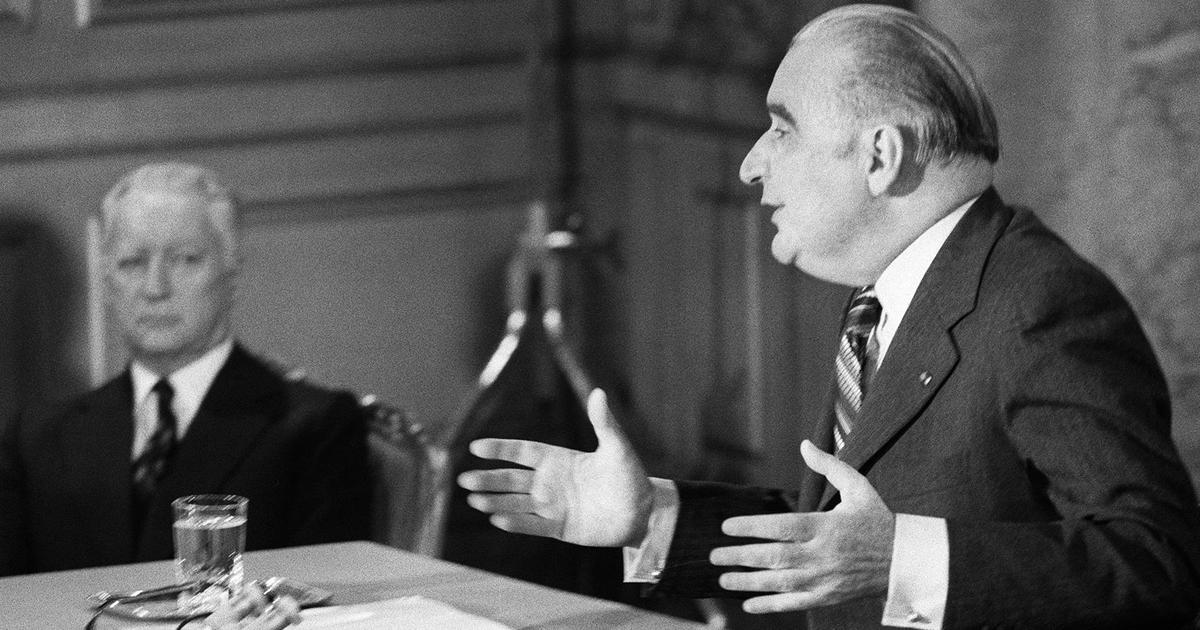It was December 18, 1970. Half a century ago.
The Airbus Industries Economic Interest Group (GIE) was formally created.
This industrial consortium was headed by a supervisory board.
Its objective was to facilitate exchanges and industrial operations between the French Aerospatiale and the German Messerschmitt-Bölkow-Blohm (MBB), but also to develop programs and market the range of Airbus aircraft.
Even before the outbreak of the Covid-19 crisis and the halt to the growth of the aeronautics market, Airbus had not planned to celebrate this anniversary.
In his view, the founding act of the company took place in May 1969 with the launch of the A300B program at the Paris Air Show, a few weeks after the political green light from General de Gaulle and Chancellor Adenauer.
But it was nevertheless in 1970 that the Airbus GIE was born and that Franco-German cooperation got to the heart of the matter.
In 1972, the GIE welcomed the Spanish Casa and in 1979 the commercial arm of British Aerospace (now BAE Systems), which took shares in the capital of the consortium.
Among these French, German, Spanish and British pioneers, few would have imagined that one day the GIE Airbus would transform into a giant capable of challenging the almighty Boeing and playing an equal role with it.
The GIE was certainly born of a strong political act, at a time when Franco-German friendship was tamed.
He is the child of a political compromise which has written Franco-German parity in Airbus' genes.
Its political promoter was Franz Josef Strauss, at the time Minister of Finance of the Adenauer government, whose native Land, Bavaria, is a shareholder of Messerschmitt-Bölkow-Blohm (MBBMesserschmitt).
A Franco-German trio of engineers - Henri Ziegler, Roger Béteille and Félix Kracht - constitutes the “industrial godfather” of Airbus.
The beginnings were difficult.
The takeoff of Airbus was laborious and its flight plan, thwarted by numerous air holes.
From the end of the 1970s, the survival of Airbus was threatened.
The first commercial aircraft born of Franco-German cooperation, the A 300, failed to exceed the 16 order mark.
The plane is denigrated in the United States, where no one wants it.
The promise to give Europe a champion in order to ensure its strategic autonomy in aeronautics is not kept.
Salvation will come from astronaut Frank Borman, who familiarized himself with the stars during the Apollo 8 mission. Now president of Eastern Airlines, this nonconformist trusts Airbus.
From then on, the GIE was successful and enriched its range.
Status change
In the 1990s, Airbus, which had barely 30% of the world market, was again in difficulty.
The world has changed.
The Berlin Wall has fallen.
Military budgets are taking a nosedive.
In 1993, at a meeting dubbed “the last supper”, William Perry, US Secretary of State for Defense to Bill Clinton, called on the bosses of the 20 main defense and aeronautical groups to unite.
In two years, four champions emerge: Boeing, which bought McDonnell Douglas in 1995, Lockheed Martin, Northrop Grumman and Raytheon.
Faced with these giants, Airbus is pale.
Politicians are aware of this but cannot find the solution.
It will be brought on a set by private actors, with Jean-Luc Lagardère, the boss of Matra, at the head of his “Lagardère Boys” at the forefront, and the German Jürgen Schrempp, boss of DaimlerChrysler, and his troops. of choc.
After a lightning campaign, between summer 1998 and autumn 1999, a compromise was sealed between Jean-Luc Lagardère and Jürgen Schrempp during a dinner on April 22, 1999. It was accepted by the government of Lionel Jospin and that of Chancellor Gerhard Schröder.
He gave birth to the company EADS.
The four industrial members of GIE Airbus provide it with their assets.
October 1999 marks the second birth of the group, celebrated with great pomp in Strasbourg.
After operating for thirty years in a consortium, Airbus has therefore turned the page of the GIE for that of a joint-stock company and becomes an integrated industrial company with 40,000 employees (against 3,500 people for the former GIE), and a turnover of 20 billion euros in 2001. Listed on the stock exchange, EADS nonetheless retains baroque governance in which private (Lagardère and DaimlerChrysler) and public (French State) shareholders have special rights.
But EADS illustrates the continuity of the Franco-German couple at the heart of a Europe which believes in its destiny and wants to create other champions, on the model of Airbus.
Standardization of governance
In 2005, Airbus succeeded in dethroning Boeing and now forms a world duopoly with it in the market for planes with more than 100 seats.
Despite the crises, nationalities with different methods and cultures are learning to trust each other and to work together.
In this regard, the A 380 program, launched in 2000, was, despite its industrial setbacks, a strong instrument for welding the various components of the manufacturer.
In the fall of 2012, the story accelerates again. The group, which is preparing to take the Airbus name, is destabilized by the failure of the merger with BAE Systems. Chancellor Merkel said
nein,
which shows that the company is not in control of its own destiny. Again at the cost of a compromise negotiated by management and the French (with Emmanuel Macron maneuvering at the Elysee Palace) and German governments, Airbus is normalizing its governance. States are still shareholders, but without special rights. Airbus is now a globalized giant with European roots, for which 140 nationalities work.
Today, Airbus is the world leader in aeronautics, while Boeing is doubly penalized by the health crisis and the 737 Max disaster. The plane, after being banned from flying for 20 months after two deadly crashes, resumed service in December after being recertified last November by the US aviation safety agency. For Airbus, as for Boeing, the challenge now is to adapt to the air transport crisis and to maintain a rebound capacity when the market takes off again. While looking ahead to the next fifteen years by working on the development of a zero-emission aircraft, which is due to enter service around 2035. Airbus unveiled two aircraft concepts on this subject last week.






